Pacific Crevalle Jack

Species Details
Caranx Caninus
Carangidae
Perciformes
Offshore
10 - 43 lbs.
12" - 40"
Pacific Crevalle Jack (Caranx caninus) Fish Description
The Pacific Crevalle Jack (Caranx caninus) is a large saltwater fish that is closely related to pompanos, jack mackerels, runners, and scads. The fish is quite a popular target for both commercial and recreational fishers due to its relative abundance in the Pacific Ocean. It can also be caught through various methods including the conventional hook and line and via trawling.
The Pacific Crevalle Jack looks a bit similar to their Atlantic cousins in that both fishes have deep and compressed oblong bodies that are silvery in color, deeply forked caudal fins, yellowish and falcate dorsal, pectoral, and anal fins, and a distinguishing black spot on the operculum and pectoral fins. What differs between the two fishes is their size (with the Atlantic fish being a bit bigger) and the number of scutes (with the Pacific Crevalle Jack having the upper hand in this regard.)
This fish is a pelagic fish that is often seen schooling in large numbers. It is also known to reproduce for most of the year but peaks in January, February, May, August, and November within the waters of Colombia and Mexico. Eggs and larvae would remain in the pelagic zone until they reach their juvenile stage wherein they would swim to estuaries and seagrass beds. As they reach adulthood, the Pacific Crevalle Jack would then congregate and form schools.
Diet and Size
The Pacific Crevalle Jack is known to be a fast and strong swimming predator that often moves around in moderate to large schools. Its diet mostly consists of smaller fishes although they tend to eat various invertebrates including prawns, shrimps, crabs, and mollusks.
Pacific Crevalle Jacks can grow as big as three feet and four inches but the average size tends to be between one to two and a half feet.
Pacific Crevalle Jack Interesting Facts
- The Pacific Crevalle Jack can grow as much as three feet and four inches in length and weigh almost forty-four pounds.
- Their average lifespan is between twelve to fifteen years in the wild—although some individuals have been recorded to live as long as thirty-seven years.
- They can produce croaking sounds by grinding their teeth together while releasing gas from their air bladder.
- Although they’re not considered an important target for commercial fisheries, they are often caught by both commercial fishers and sports anglers the whole year-round.
- It is said that bleeding and icing the fish immediately after capture can improve its flavor.
- Pacific Crevalle Jack meat is said to be a bit similar to a tuna’s when it comes to texture.
- Fresh, frozen, smoked, salted, or dried Pacific Crevalle Jacks are sold in markets.
- The fish is sometimes used for producing fishmeal and oil.
Fishing Tips and Techniques
The Pacific Crevalle Jack is known to be quite a strong and fast swimmer so once you hook one, you’re definitely going to have your hands full. But first things first, locating this fish is pretty easy as they mostly stay near the surface and they’re pretty abundant in the open waters, typically within offshore wrecks and reefs. If you see the water “boiling” on the surface, that’s where you should cast your line as the ruckus is probably caused by a school of hungry Pacific Crevalle Jacks feeding.
For the equipment, you can either use a fly gear or conventional spinning gear. Just make sure the rod is tough enough to handle this rod-bender. Use also need at least 200 yards of 20 lb. to 40 lb. monofilament line. For bait, you can either use live or artificial—anything that would attract this voracious fish. Live baits such as mullet, herring, or sardines; or artificial lures such as topwater plugs, spoons, and bucktail jigs are said to be the best options.
Lastly, you may also need to use a landing net and gloves as this fish will try to fight it out even when you’re already taking it into your boat. And because it has sharp spines along its dorsal, not to mention it’s also equipped with razor-sharp teeth and strong jaws, careful handling is definitely necessary.
Pacific Crevalle Jack Habitat and Distribution
The Pacific Crevalle Jack is a pelagic fish that is found near the surface of the open waters, often at depths of up to 1,100 feet. However, they (especially the younger ones) would sometimes wander near the coasts, particularly in the shallow flats, sandy bays, beaches, seagrass beds, and shallow reefs with depths ranging from ten to three hundred feet.
As its name implies, the Pacific Crevalle Jack can be found in the eastern Pacific, mostly in the offshore waters from California to Peru. You can also find them within the waters of the Gulf of California.







